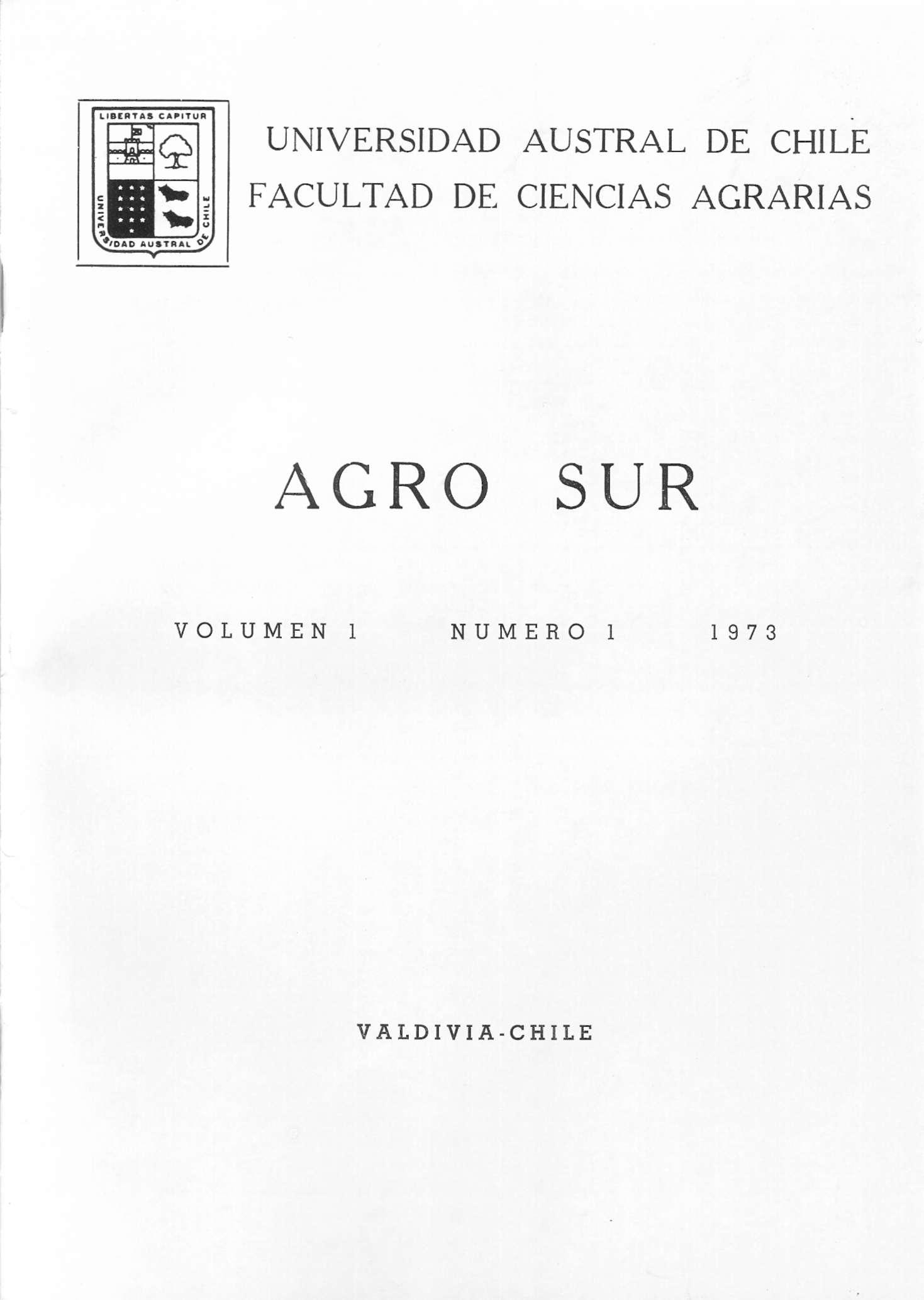COMPORTAMIENTO DE PLANTAS DE VID DE LA VARIEDAD SULTANINA (Vitis vinifera L) CON SALITRE SODICO Y NITRATO DE SODIO PRO-ANALISIS
Main Article Content
Abstract
Eigth nitrate levels: 0,8-8-12-16-20-24-28-56 mq/l and supplies of chloride and sodium, provided by chilean nitrate of soda and sodium nitrate proanalysis was investigated, to determine the effects on vegetative growth and chemical composition of Sultanina grape plants. A completly randomized design was employed; consisting of eigthtreatments for each nitrogen source and three replications per treatment.
The plants were grown in pots with quartz sand, under greenhouse conditions, and watered with nutrient solutions during the two growing periods, with an interval in frigorific chamber.
At the end of each growing period, petioles samples were taken from malure leaves, leaving out the basal ones, in order to determine the nitrate, chloride and sodium content. Also, from each plant, dry weight of shoots was measured.
The main conclusions were:
- A higher concentration of nitrate and sodium was found with second growth plant tissues.
- In the second growth period, the chloride content in the petioles decreased as the nitrate levels in the nutritive solution was increased, being lower in the second growth period.
- The lowest growth of plants, expressed as dry weight of the shoots, ocurred in the extreme treaements: with 0,8 and 56 mq/l of nitrate in the nutrifive solution, caused by high levels of chloride, in the first case, and by sodium in the latter.
- No statiscally significant differences were found between the two sources of nitroken, chilean nitrate of soda and sodium nitrate p.a., in relation to the nitrate, chloride and sodium content of the petioles, neither with the dry weigth of the shoots.

